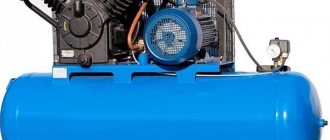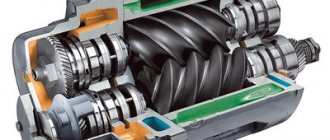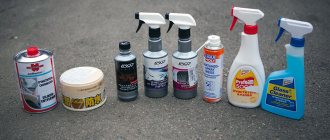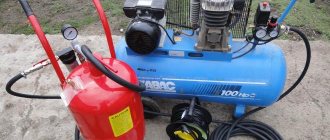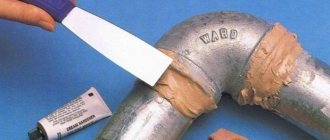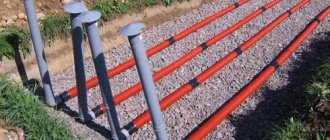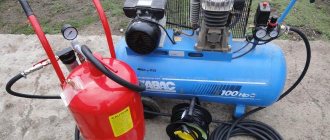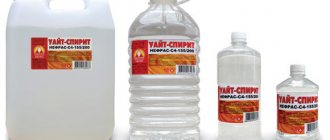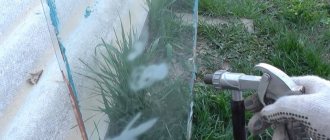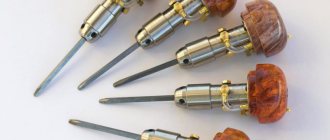Changing the oil in a piston compressor is an important condition for its long operation with minimal repair costs. To increase the reliable operation of units, special lubricants are used, and standards for their supply to the compressor are established. What the lack of proper lubrication of compressors will lead to, whether it is possible to use a double rate of lubricant in the cylinders, and what methods exist for lubricating units will be discussed in this article.
From this article you will learn:
- What is lubricant used for in reciprocating compressors?
- What lubrication systems exist for piston compressors?
- What qualities should a lubricating oil for air compressors have?
- Consequences of over-lubrication or lack of lubrication in reciprocating compressors
1What is lubricant used for in reciprocating compressors?
Lubricant performs several important functions in air compressors:
- Positive displacement compressors,
- Dynamic compressors.
Positive displacement compressors.
In positive displacement compressors, injection occurs due to the sequential filling of the working chamber with gas, and its further compression due to a forced reduction in the volume of the working chamber. To prevent the medium from escaping back, the compressor is equipped with a system of control valves that alternately open during the process of filling and emptying the chamber. The mechanical basis of positive displacement compressors can be different, and therefore devices of this type are divided into the following groups:
- Extends the service life of units by reducing the friction force between driving mechanisms, and accordingly increases their wear resistance.
- Removes excess heat from moving elements.
- Cools working units and cylinders.
- Smoothes out pulsations and vibrations of the compressor during operation.
- Reduces noise levels.
- Creates additional sealing in valve clearances, oil seals, piston rings.
- Cleans the surfaces of rubbing elements.
- Prevents abrasive wear of cylinder components.
- Seals and prevents compressed air leaks.
How to lubricate the piston of a car compressor
I must say that modern society is so tired that it throws out perfectly good things, I began to notice this more and more often... So this time, in the trash near the traffic police observation deck, an electric pump for inflating tires was identified, presumably inoperative and all torn apart, but he doesn't look all that exhausted. It was decided to take the poor fellow with him. I received it in a torn state. Apparently, the previous owner couldn’t find anything better than unscrewing all the fasteners, pulling out the power button and cutting the power cable... well, God bless him) Unfortunately, the photo at the time of the start of my interventions was not preserved.
But it looked something like this (this photo is already in the process of being completed.
The pump should look good at first glance. Piston! Let's figure out why it was thrown out.
First of all, we check whether the engine is running. We connect the wires protruding from the engine to the battery through an extension cord. Works! Great. Go ahead. We pinch the outlet hole where the hose is screwed in to check whether it holds pressure. As expected, it doesn’t hold pressure) so let’s sort it out!
We unscrew 4 screws from the piston head, 4 screws securing the side plastic cover. We remove the piston head, remove the liner jacket, liner, and see the cause of the problem:
The sealing ring on the piston has come loose. Apparently from overheating, but most likely it was originally assembled this way in China))
Let's soften this ring with something. I used thinner 646 and WDshku. And we turn it around from our native legal position. We put on the sleeve, rotate the engine shaft by the crank, checking the operation...
Everything rotates without jamming and the ring remains in place. That’s great)) Actually, we could stop the story here and finish the whole repair process. Put everything back together, hook up the wires and use it... But it wasn’t for nothing that I started making a repair report... As modern manufacturers of goods know, it is not profitable to make quality things, because the market structure of the economy requires constant consumption! And high-quality things do not contribute to a constant increase in demand for the same product, if it is not bread. But you can’t make outright shit, it won’t sell either because it won’t work from the start... So he makes it work so that it works on the counter, then it works for a couple of months and then breaks down... Few people will bother to repair it - mostly they will go for a new one, like this same in terms of quality) The initial design defect of this pump, and other similar ones, both expensive and cheap, is this: If you put the sleeve and outer jacket on the piston, you can see that, firstly, there is a significant gap between them, and the sleeve is not centered in the groove on the body:
2What are the lubrication systems for piston compressors?
The design of piston compressors uses two independent lubrication systems:
- Lubrication system for cylinders and oil seals,
- Lubrication system for movement mechanisms.
Let's take a closer look at them.
Lubrication of cylinders and oil seals
Lubrication of cylinder wear elements, such as compressor valves, piston rings, bandage rings and oil seals, must be carried out according to the recommendations specified by the compressor equipment manufacturer in the technical documentation. The service life of these components directly depends on the appropriate type of lubricant, its volume and lubrication intervals.
Lubrication of cylinders and oil seals of piston compressors is carried out in one of three ways:
1. Oil splashing from the crankcase.
This method is used in crosshead type compressors (*). From the crankcase bath, oil is captured by special sprayers and distributed over the surface of the cylinder while the piston moves. With subsequent rotations of the shaft, the piston captures the incoming oil and transfers it to other working surfaces of the cylinder. The main disadvantage of this method is the lack of regulation of lubricant consumption. In addition, contact of a large volume of oil with hot air creates an increased content of carbon deposits inside the cylinder, and uneven distribution of lubricating oil throughout all cylinder components is possible.
In the Figure, arrows depict the flow of lubricant distribution inside the air compressor cylinder.
(*) Crossheadless compressors are units characterized by simple design and low performance. Due to their weight and size characteristics, these devices are widely used in mobile transport installations, as well as in conditions with high requirements for compactness and low weight.
2. Injecting atomized oil into the incoming air stream.
Lubrication by injection of atomized oil into the suction gas flow is used in multi-stage crosshead compressors. This method allows you to lubricate those parts of the cylinders that are not adjacent to the crankcase. For this purpose, part of the air flow enters the cylinders through the crankcase cavity, which is filled with finely dispersed oil, and is then thrown into the cylinder with oil vapor. However, this method does not allow completely covering all working surfaces of the cylinder. In addition, close contact of some gases with oil mist significantly reduces its quality, so this method cannot be called the best.
3. Lubrication of cylinders and oil seals under pressure.
This method has another name - forced lubrication of the cylinder. It is most often used in crosshead compressors. The lubricant is supplied by a plunger pump - a lubricator. In horizontal type compressors, oil is supplied at the top point, or at two points - with a large cylinder diameter (more than 500 mm). Vertical cylinder compressors also have one or more oil entry points. Their number also depends on the diameter of the cylinders.
Oil flows from the pump through oil lines. To control the flow of lubricants, special control valves with check valves are installed at the inlets, which prevent the release of oil or compressed air from the cylinder when the valve is open. This method is the highest quality, as it allows you to completely lubricate all working surfaces of the cylinder and its components.
Lubrication of movement mechanisms
Lubrication of the moving elements of a piston compressor is carried out in two ways:
- Splashing through the crankcase
- By forced method (by circulating oil inside the compressor).
Let's take a closer look
Oil splash lubrication
along the working surfaces of movement mechanisms are used in compressors with small dimensions and intended for short-term work (for example, for working with a pneumatic impact wrench). Oil is poured into the crankcase bath, which, when the shaft rotates, turns into a mist and only then reaches the rubbing surfaces through the bearing units.
This method does not effectively remove heat, so the spray system is most often used in household or semi-professional compressor models. Another disadvantage of the method is insufficient control over the oil level in the crankcase, which may result in underfilling or overfilling of lubricant in the compressor. It is also possible for the oil to quickly become contaminated, filters become clogged, and dirt and oil enter the compressed air.
Forced lubrication
driving mechanisms is carried out through the compressor crankcase by supplying oil with a gear pump in a closed cycle. Therefore, this method has another name - circulation. The lubricant enters the pump through a coarse filter. Then, after the pump, the oil passes through a slotted (plate) filter and a refrigerator, and enters the mechanisms. Some of the oil flows through holes in the crankshaft to the connecting rod bearings and then, through drillings in the connecting rod or through special pipes attached to the connecting rod, moves to the crosshead pin. The other part of the oil flows to the rubbing surfaces of the crosshead. The forced lubrication system is equipped with pressure gauges and a bypass valve to regulate pressure.
The method of forced lubrication of moving elements is more economical, since the oil remains inside the compressor, and is also the most productive in terms of covering all components of the unit with lubricant.
In Figure 2, the dotted lines show a closed system of forced lubrication of the cylinder and seals of an air compressor.
Repaired throttle mechanism from IVECO
They brought me this kind of tchotchke. With a request to model and print gears.
The modeling took about an hour and a half. But the whole point is that the original half gear had a ferrite magnet, which worked in tandem with a hall sensor for positioning. The magnet is not a simple one, but a crescent. Therefore, the task was also to remove the magnet from the original gear without damaging it. Which took me a lot longer. I sanded it down with coarse sandpaper until I got to the magnet and was able to pull it out without damaging it. As a result, I took it out and inserted it into a new gear. The gear was printed from two materials. The first 10 layers 0.150 mm thick were engineering ABS, the remaining layers were Elastan D80. After installing the magnet, the new gear was pressed onto the shaft (which was heated to 120 degrees)
3What qualities should a lubricating oil for air compressors have?
Requirements for lubricants for air compressors
- Lubricating oils must have a flash point in the range of +220...+240C and an ignition temperature of about +400C.
- Sufficient viscosity of the product to create a stable film.
- The lubricant must have stable characteristics that do not change during compressor operation (no stratification, do not come into contact with gases, do not form carbon deposits, etc.)
- The lubricant must be free of water and mechanical impurities.
- Oils for lubrication of high-performance (high-speed) compressors must contain anti-foam additives.
- The average oil service life should be about 2500 hours.
- Acidity levels should be normal.
- The content of water-soluble acids and alkalis must be within the specified norm.

